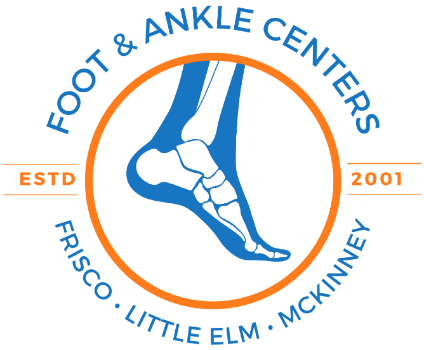Sever’s Disease: Heel Pain in Kids at Foot and Ankle Centers
Apr 30, 2025 | By: Foot & Ankle Centers of Frisco and Plano
Did you know that heel pain is not just an adult issue? In fact, heel pain in children can be quite common, and one of the leading culprits is a condition known as Sever’s Disease. This condition primarily affects active children and adolescents, causing pain and discomfort that can hinder their physical activities. In this comprehensive guide, we’ll explore what Sever’s Disease is, identifying symptoms, potential causes, effective treatment options, and preventative measures that can help your child stay active and pain-free. Understanding heel pain in kids is crucial, and through this post, parents, coaches, and caregivers can learn essential information to manage and alleviate these issues effectively.
Understanding Sever’s Disease
Sever’s disease, medically known as calcaneal apophysitis, is a common cause of heel pain in children and adolescents, especially those between the ages of 8 and 14. The main characteristic of this condition is inflammation in the growth plate located at the back of the heel. This growth plate is sensitive to stress and frequent physical activity, which exacerbates the pain and discomfort.
Causes of Sever’s Disease
Sever’s Disease is largely associated with growth spurts during which children are active in sports or high-impact activities. Factors contributing to the development of this condition include:
- Overuse: Frequent jumping and running can put increased stress on the heel.
- Foot Structure: Flat feet or high arches can lead to improper alignment and increased strain on the heel.
- Tight Muscles: Inflexible calf muscles can limit ankle movement, resulting in extra tension on the heel.
Symptoms of Sever’s Disease
Typical symptoms of Sever’s Disease include:
- Heel Pain: Often felt at the back of the heel that worsens during activity and improves with rest.
- Swelling and Tenderness: The area around the heel may feel sensitive to touch.
- Difficulty Walking: Pain can result in altered walking patterns or limping.
It is crucial for parents to recognize these symptoms early, as they can lead to complications if left untreated.
Diagnosis of Sever’s Disease
To diagnose Sever’s Disease, a medical professional may conduct a physical examination, discussing the child’s activity level and evaluating any signs of discomfort. X-rays may also be performed to rule out other potential heel issues, such as fractures or other bone-related conditions.
Treatment Options
Effective management of Sever’s Disease typically includes a combination of the following treatment options:
1. Stretching Exercises
To alleviate tension, incorporate stretching routines especially targeting the calf muscles and Achilles tendon. Calf stretches performed regularly can help improve flexibility and reduce pain. Simple stretches that can be performed at home include:
- Wall Calf Stretch: Lean against a wall with one foot behind the other and gently push the back heel down to stretch.
- Seated Towel Stretch: Sitting on the floor with legs extended, loop a towel around the foot and pull gently towards you.
2. Supportive Footwear
Investing in well-fitted, supportive shoes is crucial for children with Sever’s Disease. Look for:
- Proper arch support
- Cushioned soles
- Sufficient room for toe movement
Avoid flip-flops or unsupportive footwear to prevent further aggravation.
3. Rest and Ice Therapy
Encouraging your child to rest and apply ice packs to the affected heel for about 15-20 minutes can significantly help in reducing swelling and alleviating pain soon after activities.
4. Activity Modification
To prevent further injury, modify your child’s activities. Consider reducing high-impact sports or switching to low-impact activities such as swimming or cycling until the inflammation subsides. Communicate with coaches about the child’s condition to accommodate practice schedules accordingly.
Preventive Measures
Taking preventive measures can go a long way in minimizing the occurrence of Sever’s Disease or similar conditions in active children:
- Regular Footwear Check: Periodically assess if your child’s shoes still provide adequate support as they grow quickly.
- Gradual Training: Encourage gradual increases in activity levels, allowing the body to adapt properly without too much strain.
- Encourage Stretching: Cultivate a routine that includes stretching before and after physical activities as part of a comprehensive approach to injury prevention.
When to Seek Professional Help
It’s essential to consult a medical professional if your child is experiencing persistent heel pain, or if pain interferes with daily activities or sports participation. An early diagnosis can help manage the condition proactively, preventing further complications such as long-term issues with foot growth.
Understanding the Recovery Process
Recovery from Sever's Disease varies by individual, depending on factors such as age, activity level, and adherence to treatment programs. Many children find relief in a matter of weeks, while others may take longer.
Conclusion: Taking Action for Your Child’s Foot Health
As a parent, being educated about children’s health issues like Sever’s Disease is not only beneficial—it’s crucial. By observing your child’s activities, recognizing symptoms early, and implementing the necessary treatment options, you can help your child maintain a healthy and active lifestyle despite heel pain challenges.


Leave a comment
0 Comments